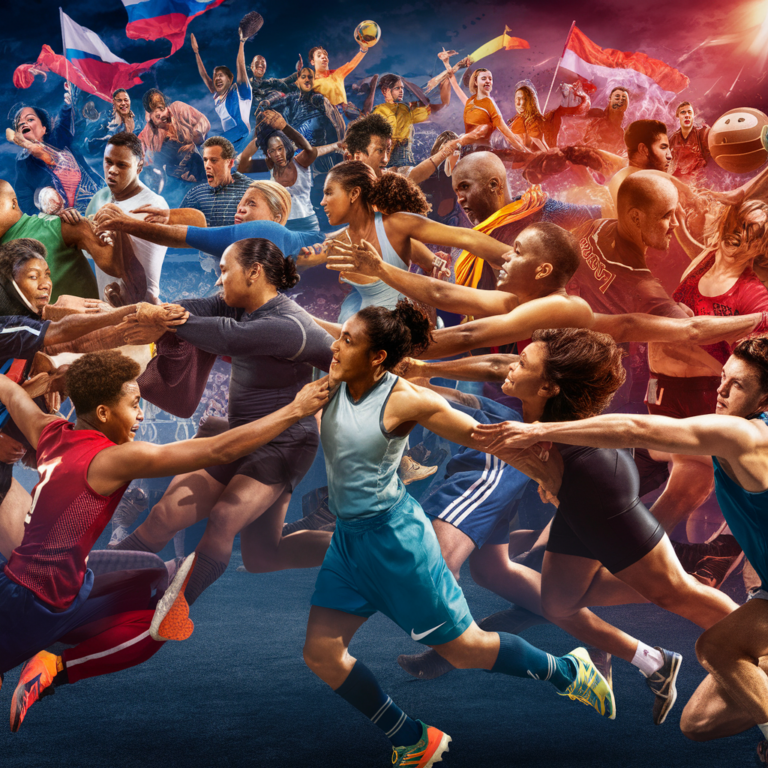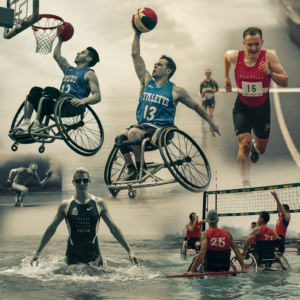Exploring the Rise of Women in Competitive Sports
When thinking about competitive sports, one might visualize the roaring crowds, the sweat-drenched athletes, and the glory that comes with victory. However, what’s often overlooked is how these scenes are increasingly featuring women who are not just participants but trailblazers in their respective fields. It’s a fascinating evolution, and I can’t help but feel a personal connection to this narrative—after all, I grew up watching my sister dominate in volleyball, and her relentless spirit laid a foundation for how I view women’s sports today.
A Historical Perspective
To truly understand the rise of women in competitive sports, we must first take a step back. The history of women in sports is both rich and complex, often marked by struggle and perseverance. For instance, if we rewind to the late 19th century, women’s athletic participation was limited, often seen as unfeminine or unladylike. Imagine the audacity of women wanting to run, jump, or throw—activities that were overwhelmingly reserved for men.
Fast forward to 1972, when Title IX was enacted in the United States, prohibiting sex-based discrimination in federally funded education programs. This was a pivotal moment, akin to flipping a switch. Suddenly, schools were required to provide equal opportunities for female athletes, leading to a substantial increase in women’s participation in sports at all levels. Schools began to offer scholarships, and the floodgates opened. More women were not just playing sports; they were excelling.
Breaking Barriers
As we moved into the late 20th and early 21st centuries, women began to shatter stereotypes and break down barriers. From the legendary Billie Jean King, who famously defeated Bobby Riggs in the “Battle of the Sexes,” to the fierce Serena Williams, who has become a cultural icon, women have consistently challenged the norms. It struck me that these athletes not only excelled in their sports but also became advocates for gender equality, using their platforms to fight for pay equity and recognition.
One cannot overlook the impact of media coverage during this time. While women’s sports were often relegated to the back pages or ignored altogether, the rise of social media changed the game. Platforms like Twitter and Instagram have given female athletes a voice, enabling them to connect directly with fans and share their stories. The visibility of women in sports is no longer a novelty; it’s becoming the norm. And let’s be honest, who doesn’t love following an athlete’s journey on social media? It adds a personal touch that traditional coverage often lacks.
The Role of Sponsorship and Media Coverage
Speaking of visibility, sponsorships have also played a crucial role in this rise. Brands like Nike and Adidas have started investing heavily in female athletes, recognizing the potential market. In 2020, Nike launched its “Play New” campaign, which featured women athletes prominently, showcasing their talents and stories. This shift isn’t just about marketing; it reflects a broader cultural recognition of women’s contributions to sports.
However, it’s not all sunshine and rainbows. The disparity in media coverage still exists, with women’s sports receiving only a fraction of the airtime compared to men’s. According to a study by the Women’s Sports Foundation, women’s sports received just 4% of sports media coverage in 2020. It’s a stark reminder that while progress has been made, there’s still much work to be done. It makes me wonder—what would happen if women’s sports received the same level of attention as men’s? Would we see an even greater surge in participation?
Iconic Moments in Women’s Sports
Let’s take a moment to celebrate some of the iconic moments in women’s sports that have contributed to this rise. Who could forget the U.S. Women’s National Soccer Team winning the World Cup in 1999? The image of Brandi Chastain ripping off her jersey in celebration is etched in the minds of many, symbolizing not just a victory, but a movement. It wasn’t just about soccer; it was about women asserting their place in a male-dominated arena.
Then there’s the remarkable story of the 2012 Olympic Games in London, where female athletes from Saudi Arabia competed for the first time. This was a monumental moment not just for those athletes, but for women around the globe. It was a clear indication that sports can transcend cultural and societal barriers.
And of course, we must mention the emergence of women in traditionally male-dominated sports. Take Ronda Rousey, who not only became the first female fighter in the UFC but also paved the way for future generations of female fighters. Her impact was profound, inspiring countless women to enter the octagon and prove that they could compete at the highest levels.
Challenges on the Horizon
Despite these incredible strides, challenges persist. The issue of pay disparity continues to rear its ugly head. Female athletes, even those at the pinnacle of their sports, often earn significantly less than their male counterparts. The U.S. Women’s National Soccer Team, for example, has fought tirelessly for equitable pay, and while they’ve made progress, the battle is far from over. It’s baffling—why should a World Cup-winning team earn less than a team that didn’t even make it past the quarter-finals? (Talk about a head-scratcher!)
Additionally, the pressure on female athletes to conform to societal standards of femininity can be overwhelming. There’s often an expectation to look a certain way, to be both strong and delicate, fierce yet graceful. I remember a conversation with a friend who remarked how frustrating it is that female athletes are sometimes judged more on their appearance than their performance. It’s a double standard that needs to be addressed.
The Importance of Representation
Representation matters. When young girls see women excelling in sports, it sends a powerful message: they too can achieve greatness. Organizations like Girls on the Run and Women’s Sports Foundation are instrumental in providing young girls with the resources, mentorship, and opportunities they need to thrive. I can’t help but feel nostalgic thinking about my childhood sports camps, where the coaches were often women who inspired me to push my limits. That kind of representation can change lives.
Moreover, the rise of female coaches and leaders in sports is a vital step in ensuring that women’s sports continue to grow. As more women take on coaching roles, they bring unique perspectives and experiences that can greatly benefit female athletes. The impact of a strong female mentor cannot be understated; it creates a ripple effect, inspiring the next generation.
The Future Looks Bright
Looking ahead, the future of women in competitive sports appears promising, albeit with some caveats. The continued push for equality in pay, coverage, and opportunities is essential. As more women break records and shatter glass ceilings, it’s crucial that society embraces and supports these changes. The rising number of women in leadership positions within sports organizations is encouraging, and their influence will undoubtedly shape the landscape for years to come.
It’s also worth noting that the pandemic has changed the dynamics of sports. With the rise of virtual competitions and increased accessibility, there’s potential for new forms of engagement. Perhaps we’ll see more women participating in sports that were previously less visible or accessible to them. Who knows, we might even witness the rise of women’s e-sports, a domain that is already seeing significant interest!
Conclusion: A Call to Action
As we explore the rise of women in competitive sports, it’s clear that we are witnessing a transformative era. From trailblazers who have paved the way to the countless athletes who continue to rise, the narrative is one of empowerment and resilience. However, it’s crucial to remember that progress is not a straight line; it’s a winding path filled with both triumphs and challenges.
So, what can we do as fans, advocates, and supporters? Let’s champion women’s sports by attending games, sharing stories, and advocating for equitable coverage. Let’s celebrate the victories, both big and small, and recognize that when women succeed in sports, we all win. After all, sports are about more than just competition; they’re about connection, inspiration, and breaking down barriers.
In closing, I leave you with this thought: the rise of women in competitive sports is not just a moment in time; it’s a movement. And like all great movements, it requires dedication, passion, and, most importantly, collective action. So let’s lace up our sneakers, cheer on our favorite athletes, and continue to push for equality in every arena. Who’s with me?









